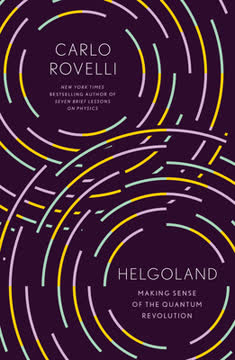Key Takeaways
1. The presidency was invented to balance power and unity
Put simply: Make a republic and extend its sphere.
Balancing act. The Founders created the presidency as a unique solution to the challenge of effective leadership without tyranny. They sought to separate powers while maintaining unity, a concept encapsulated in the phrase "separating to unify." This design distributed powers among branches, with the president given significant authority but also subject to checks and balances.
Constitutional framework. The Constitution vested executive power in the president, but deliberately left many aspects of the role undefined. This ambiguity allowed for flexibility and evolution over time. Key presidential powers included:
- Veto power (with congressional override)
- Commander-in-chief status
- Treaty-making (with Senate advice and consent)
- Appointment power (with Senate confirmation)
- Responsibility to execute laws faithfully
Historical context. The presidency emerged from intense debate at the Constitutional Convention, with delegates seeking to avoid both the tyranny of monarchy and the ineffectiveness of the Articles of Confederation. The result was a robust executive, but one constrained by the other branches and accountable to the people.
2. Presidents face constant challenges in a separated system
Presidents are decision makers who work at a job structured by the tension between what is expected and what can be delivered.
Expectations vs. reality. Presidents are held accountable for government performance, yet their actual power is limited by the separation of powers. This creates a perpetual challenge:
- High public expectations for presidential leadership
- Constitutional constraints on unilateral action
- Need to work with Congress and navigate bureaucracy
- Responsibility without full control
Adapting to circumstances. Presidents must be agile in responding to:
- Changing political landscapes
- Evolving policy challenges
- Crises and unexpected events
- Technological and social changes
Leadership strategies. Successful presidents develop strategies to navigate these challenges:
- Building coalitions in Congress
- Effective use of the "bully pulpit" to shape public opinion
- Leveraging bureaucratic expertise
- Balancing domestic and foreign policy demands
3. Electoral process shapes presidential power and accountability
Being elected president is but the first step in the exercise of power.
Complex election system. The Electoral College system, designed by the Founders, creates unique dynamics:
- Possible divergence between popular and electoral vote
- Focus on swing states in campaigns
- Two-party dominance encouraged
Mandate and legitimacy. How a president is elected affects their political capital:
- Landslide victories can embolden ambitious agendas
- Close elections may necessitate more cautious approaches
- Split-party government complicates policy-making
Constant campaigning. Modern presidents face:
- Pressure to maintain public approval ratings
- Need to "go public" to build support for policies
- Challenge of governing while preparing for re-election
Term limits. The 22nd Amendment limits presidents to two terms, affecting:
- Long-term planning and legacy-building
- Political dynamics in second terms ("lame duck" phenomenon)
4. Making and remaking a presidency: Appointments and transitions
Presidents-elect have approximately ten weeks to form and prepare their presidencies.
Critical appointments. A new president's first major task is staffing the administration:
- Cabinet selections signal priorities and governing philosophy
- White House staff choices shape decision-making processes
- Balancing loyalty, expertise, and diversity in appointments
Transition challenges. Presidents face a steep learning curve:
- Shifting from campaign mode to governing
- Inheriting ongoing policies and commitments
- Navigating relationships with career bureaucrats
Adapting over time. Presidents often remake their administrations:
- Staff turnover and cabinet reshuffles
- Shifts in governing approach based on experience
- Responding to changing circumstances and political realities
5. Presidents must connect to and lead a vast government apparatus
The presidency is a dynamic institution, one constantly being shaped and reshaped.
Scale of governance. Modern presidents oversee:
- 15 cabinet departments
- Numerous independent agencies and commissions
- Millions of federal employees
- Trillions in government spending
Tools for control. Presidents use various mechanisms to exert influence:
- Executive orders and directives
- Budget proposals and management
- Appointment power (political appointees throughout bureaucracy)
- White House offices (e.g., Office of Management and Budget)
Challenges of leadership. Presidents must navigate:
- Competing interests within the executive branch
- Tension between political goals and bureaucratic realities
- Balancing centralized control with agency expertise
- Coordinating policy across complex organizational structures
6. Presidential decision-making involves complex policy processes
Presidents are enablers of lawmaking, policy making, and decision making.
Policy roles. Presidents engage in multiple stages of policymaking:
- Problem definition and agenda-setting
- Policy formulation and proposal
- Building support for initiatives
- Implementation oversight
- Evaluation and adjustment
Types of decisions. Presidential decision-making varies by context:
- Routine vs. crisis situations
- Domestic vs. foreign policy
- Incremental changes vs. major reforms
Constraints and opportunities. Presidents must consider:
- Constitutional limits and separation of powers
- Political feasibility and public opinion
- Budgetary constraints
- International obligations and geopolitical realities
7. Reform and change shape the evolving presidency
Events, the issues they generate, and the people who serve are normally more important than reforms in explaining change.
Sources of change. The presidency evolves through:
- Constitutional amendments (e.g., term limits)
- Statutory reforms (e.g., War Powers Resolution)
- Supreme Court decisions interpreting presidential power
- Changing customs and public expectations
Adapting to circumstances. Major events drive presidential evolution:
- Wars and national security crises
- Economic upheavals
- Technological changes
- Social and demographic shifts
Unintended consequences. Reforms often have unexpected effects:
- Efforts to limit power may create new avenues of influence
- Increased responsibilities may not come with commensurate authority
- Changes in one area can ripple through the entire political system
8. The future presidency: Navigating political, policy, and administrative landscapes
Effective presidential power in a separated system is that exercised in recognition of the legitimate functions of the other branches.
Political realities. Future presidents will likely face:
- Continued partisan polarization
- Close elections and divided government
- Intense media scrutiny and rapid news cycles
Policy challenges. Emerging issues include:
- Balancing national security and civil liberties
- Managing the effects of globalization
- Addressing long-term fiscal challenges (entitlements, debt)
- Responding to technological disruption and climate change
Administrative complexities. Presidents must grapple with:
- Expanding federal responsibilities
- Intergovernmental coordination (federal, state, local)
- Balancing political responsiveness and bureaucratic expertise
- Leveraging technology while maintaining accountability
Enduring tensions. The core challenges of the presidency persist:
- Balancing power and restraint
- Meeting public expectations within constitutional limits
- Leading a complex government while remaining responsive to the people
Last updated:
FAQ
1. What is "The American Presidency: A Very Short Introduction" by Charles O. Jones about?
- Concise overview of the presidency: The book provides a brief yet comprehensive introduction to the American presidency, focusing on its origins, evolution, and current role within the U.S. government.
- Emphasis on separated powers: Jones explores how the presidency was designed as part of a system of separated institutions sharing powers, rather than as a dominant executive.
- Historical and contemporary analysis: The book traces the development of the office from its invention at the Constitutional Convention to modern challenges, reforms, and expectations.
- Accessible for all readers: Written for both newcomers and those familiar with American politics, it aims to clarify the complexities and realities of presidential power.
2. Why should I read "The American Presidency: A Very Short Introduction" by Charles O. Jones?
- Expert perspective: Charles O. Jones is a respected scholar of American government, offering authoritative insights into the presidency’s structure and function.
- Clarifies common misconceptions: The book dispels myths about presidential power, showing how the office is both influential and constrained.
- Context for current events: Understanding the presidency’s design and evolution helps readers interpret contemporary political debates and presidential actions.
- Broad yet focused coverage: The book covers foundational concepts, historical turning points, and ongoing reforms, making it a valuable primer for students, citizens, and professionals.
3. What are the key takeaways from "The American Presidency: A Very Short Introduction"?
- Presidency as part of a system: The American presidency was invented as one branch among several, with powers intentionally limited and shared with Congress and the courts.
- Separation of powers is central: The Founders designed a government where institutions compete and cooperate, preventing any one branch from dominating.
- Presidential power is dynamic: The office has grown in complexity and influence, but its effectiveness depends on context, events, and the ability to work with other branches.
- Reforms and change are ongoing: Attempts to reform the presidency often have unintended consequences, and real change is usually driven by events rather than structural tweaks.
4. How did the Founders invent the American presidency, according to Charles O. Jones?
- Deliberate experimentation: The Founders debated various models, ultimately rejecting both a weak executive and a parliamentary system in favor of an independently elected president.
- Balancing power and accountability: They sought to create an executive strong enough to lead but constrained enough to prevent tyranny, resulting in a system of checks and balances.
- Key design choices: The presidency was shaped by debates over selection (Electoral College), term length, removal (impeachment), and the allocation of powers (appointments, treaties, military command).
- Separation to unify: The Founders believed that separating powers among branches would ultimately promote unity and effective governance.
5. How does "The American Presidency: A Very Short Introduction" explain the evolution of presidential power and its place in government?
- From congressional to separated presidency: Early proposals favored a congressional presidency, but the final design created an executive with independent legitimacy and shared powers.
- Physical and political separation: The book discusses how the capital’s design and the presidency’s location reflect the principle of separated powers.
- Adaptation over time: Presidents have had to find their place amid changing expectations, government growth, and shifting political landscapes.
- Influence of events and personalities: Major events (wars, crises, scandals) and individual presidents have shaped the office’s evolution more than formal reforms.
6. What is the significance of the separation of powers in the American presidency, as described by Charles O. Jones?
- Core constitutional principle: The separation of powers ensures that the president, Congress, and judiciary each have distinct roles and can check one another.
- Prevents concentration of authority: By dividing powers, the system guards against executive overreach and maintains democratic accountability.
- Requires cooperation and competition: Effective governance depends on negotiation and compromise among branches, not unilateral presidential action.
- Shapes presidential leadership: Presidents must lead by influence and persuasion, not by command, within a system designed for shared and competing powers.
7. How are presidents elected, and what are the implications of the Electoral College system according to the book?
- Unique election method: Presidents are chosen by electors, not directly by popular vote, with each state determining how its electors are selected.
- Origins and rationale: The Electoral College was a compromise to balance state and federal interests and to avoid legislative selection of the executive.
- Consequences for political parties: The system encourages the development of broad-based, adaptable parties and often results in split-party government.
- Ongoing debates and reforms: While the system has produced anomalies and close elections, it has proven resistant to change and continues to shape presidential legitimacy.
8. What are the main challenges and processes involved in making and remaking a presidency, according to Charles O. Jones?
- Transition and appointments: New presidents must quickly fill key positions, manage transitions, and build effective teams amid high expectations and scrutiny.
- Balancing continuity and change: Presidents inherit ongoing programs and bureaucracies, requiring them to adapt and sometimes remake their administrations.
- Turnover and second terms: Cabinet and staff turnover is common, especially between terms, affecting stability and policy implementation.
- Campaigning vs. governing: The skills and strategies needed to win office differ from those required to govern, and modern presidents must navigate both simultaneously.
9. How does "The American Presidency: A Very Short Introduction" describe the president’s role in leading and connecting to the government?
- Chief executive responsibilities: The president oversees a vast and complex executive branch, including cabinet departments, agencies, and millions of employees.
- Managing relationships: Effective leadership requires building connections with Congress, the judiciary, the media, state and local governments, and international actors.
- Limits of control: Despite expectations, no president fully manages the executive branch; much depends on delegation, coordination, and the expertise of staff.
- Growth of the presidential branch: The rise of the Executive Office of the President and White House staff reflects the increasing demands on presidential leadership.
10. What does Charles O. Jones say about presidential lawmaking, policy-making, and the president’s relationship with Congress?
- Joint enterprise: Lawmaking is a shared process; presidents propose agendas and sign or veto bills, but Congress controls appropriations and legislation.
- Policy types and processes: Presidents are most influential in crisis response and foreign policy, but must often compromise or adapt in domestic policy.
- Budgeting as coordination: The budget process exemplifies the interdependence of branches, with both the executive and Congress playing key roles.
- Impact of events and context: Presidential effectiveness in lawmaking depends on political capital, party control, and external events more than formal powers.
11. How does "The American Presidency: A Very Short Introduction" address reforms, changes, and the future of the presidency?
- Types of reforms: The book examines constitutional amendments, statutes, Supreme Court decisions, and evolving customs as sources of change.
- Limits and unintended consequences: Many reforms, such as term limits or the War Powers Act, have had mixed or unexpected effects on presidential power.
- Events drive real change: Jones argues that major events and societal shifts, rather than reforms alone, are the primary drivers of presidential evolution.
- Future prospects: The presidency will continue to adapt to narrow political margins, complex policy challenges, and administrative constraints, but its core constitutional structure is likely to endure.
12. What are the best quotes from "The American Presidency: A Very Short Introduction" by Charles O. Jones, and what do they mean?
- "A government of separated institutions sharing powers." (Richard E. Neustadt, quoted by Jones) – This encapsulates the book’s central theme: the U.S. government is designed for shared, not concentrated, authority.
- "Presidents are not and cannot be as powerful as most people think." – Jones emphasizes that the presidency’s strength is always limited by the need to work with other branches.
- "Inventors are problem solvers. Typically they tinker until they believe they have a workable device." – The Founders’ approach to creating the presidency was experimental and pragmatic, not dogmatic.
- "Effective presidential power in a separated system is that exercised in recognition of the legitimate functions of the other branches." – True presidential leadership comes from understanding and respecting the system’s checks and balances, not from seeking unchecked authority.
Review Summary
The American Presidency receives mixed reviews, with an average rating of 3.39 out of 5. Some readers find it informative and concise, praising its overview of the presidency's history and functions. Others criticize its dry writing style and lack of coherent structure. Many appreciate the book's insights into the office's evolution and its relationship with other branches of government. However, some readers struggle with the dense information and find it challenging to follow without prior knowledge of American politics.
Very Short Introductions Series Series

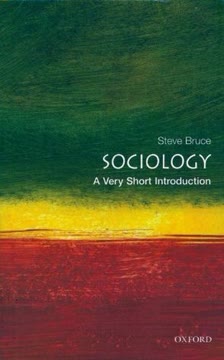

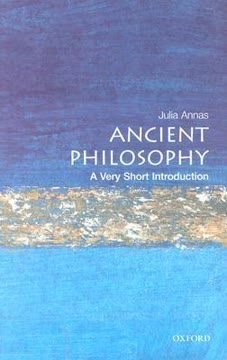
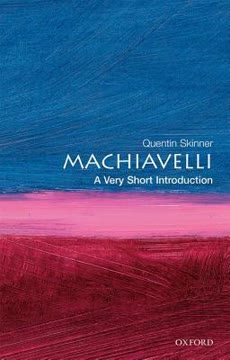
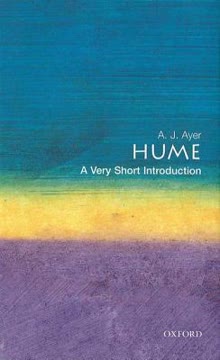

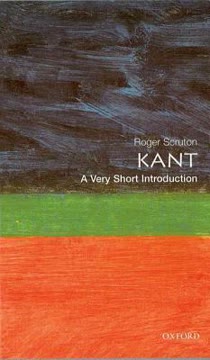
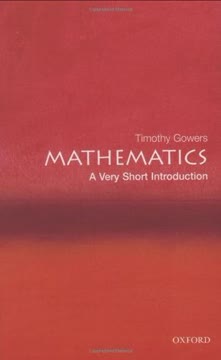

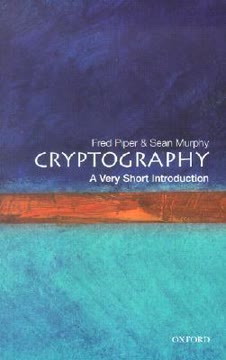

Similar Books
Download PDF
Download EPUB
.epub digital book format is ideal for reading ebooks on phones, tablets, and e-readers.




